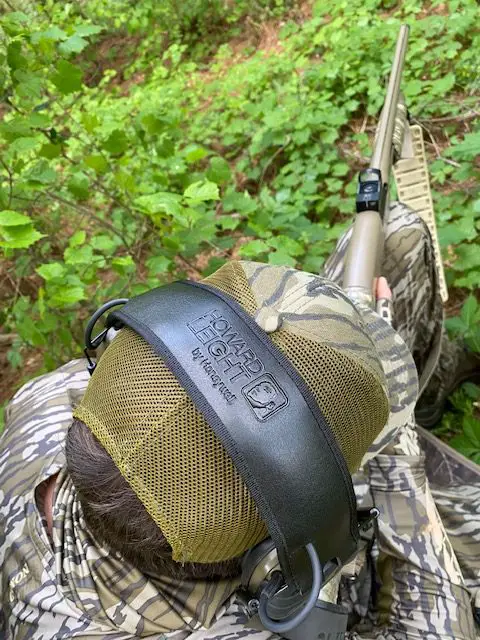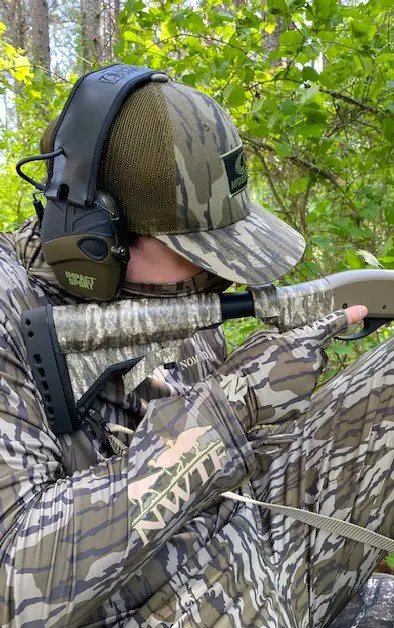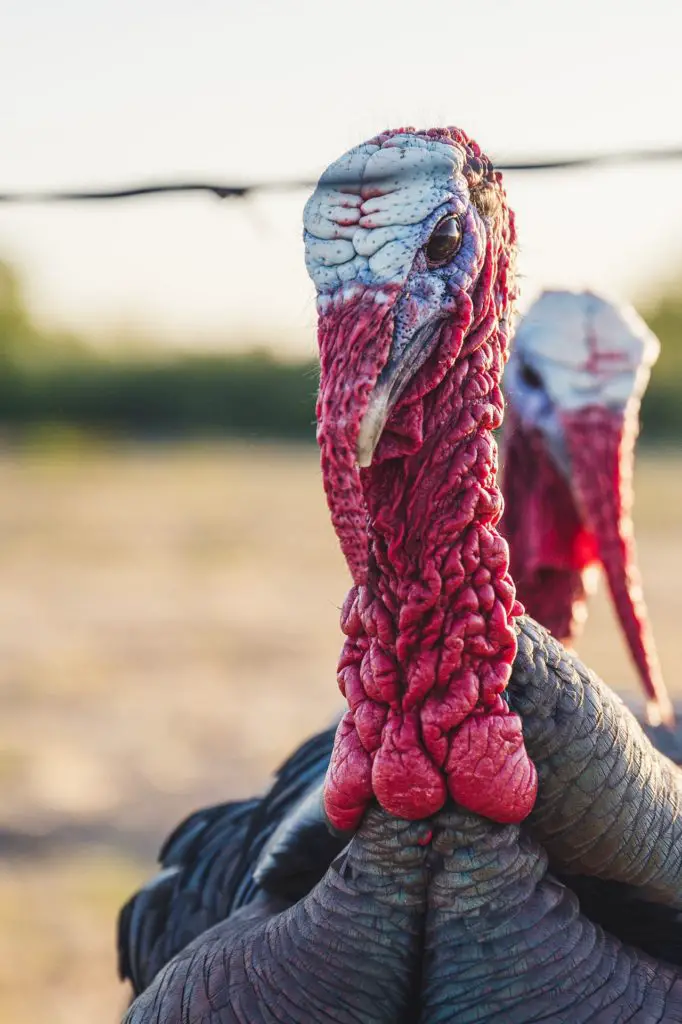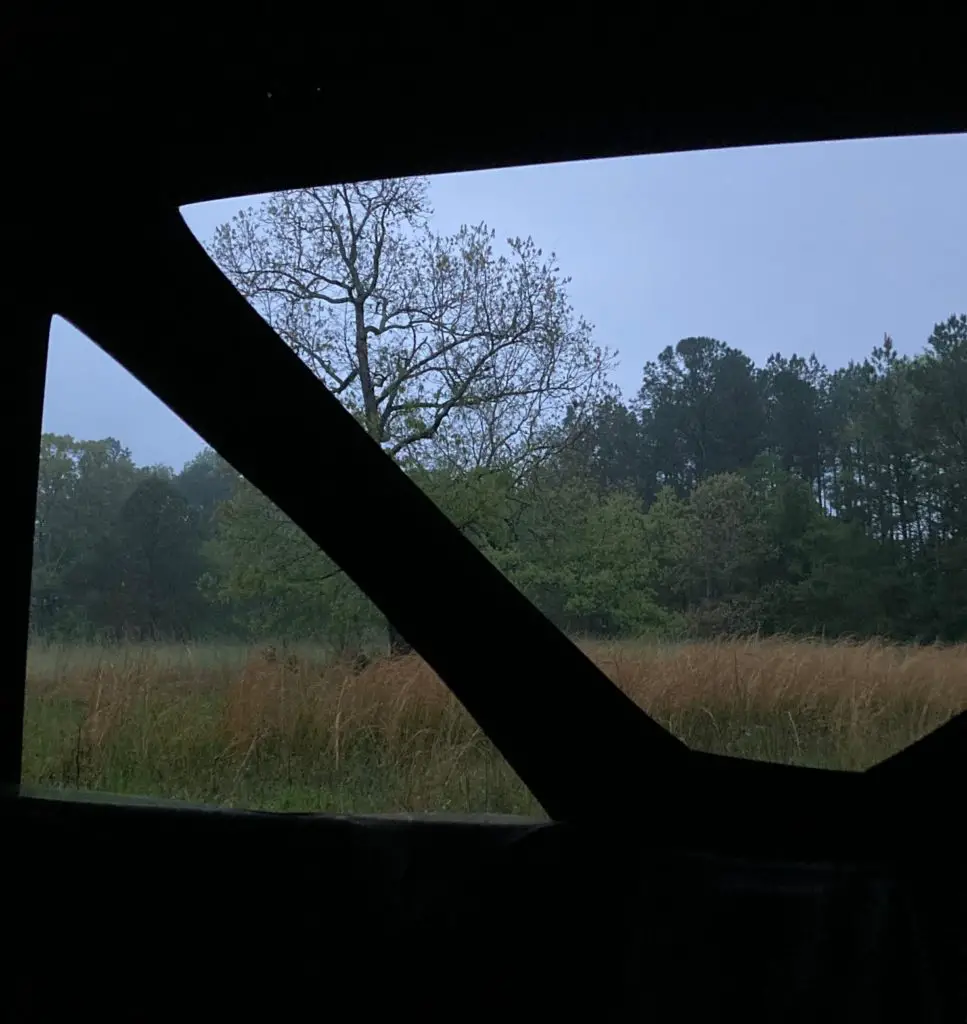
The sun is just starting to rear its head up in the east. You hear a gobble in the distance. But what is the distance? How far can you hear a turkey?
It’s a good question because knowing the answer provides you with the information you need to form a strategy. How far a turkey is from you determines whether you should move or stay put. It determines whether you should get your gun ready or keep your calls on hand.
Unfortunately, there is no easy way to calculate how far away you can hear a turkey. There are hunters who claim to have heard turkeys more than a half-mile away. There are even some who claim to have heard turkeys from over a mile away.
Gauging the distance of a gobbling tom is an art form that comes with experience. However, there are some factors that you should know that can help you make an educated guess. I’m no physics expert, but I’ll do my best to explain what I understand about sound and give you some tactics to hunt based on these factors.
Factors that Influence How Far You Can Hear a Turkey
The Turkey
Just like humans, some turkeys have louder voices than others. Likewise, they don’t always speak at the same volume either. Sub-dominant gobblers may not gobble as loud to avoid any trouble with the boss gobbler.
Another consideration is the tom’s position. A gobble from the limb can be heard roughly twice as far as one from the ground. This may explain why “he was going crazy on the limb this morning, but he flew down and shut up.” Perhaps, you just can’t hear him anymore.
The way the tom projects the sound can also impact how far you can hear him from. If he is facing away from you, he can sound much further away than if he were calling towards you.

Elevation/Topography
Think of gobble as a tangible object being transported from the gobbler to you. The more objects in its way, the harder it will be for you to hear that sound.
If a turkey is in a valley and you are in another valley, you will have a hard time hearing that gobble pass through the mountain or hill in between you two. However, it will be much easier to hear a turkey if one or both of you are up on a peak.
Weather
Weather plays a huge factor in how far you can hear a turkey. Winds, temperatures, air pressure, and humidity can all factor into this.
One very windy day, I was hunting in a field. I could see a tom gobbling as he approached me, but I could not hear the gobbles. The wind limited my hearing to less than a hundred yards that day. It was incredible.
Temperatures can also play a big factor. The colder it is, the further sound travels. That means for most places, early spring will be the time you can hear gobbles the furthest. There is another reason for this as we will discuss in the next section.
Vegetation
The more vegetation in the area, the more sound that is blocked or absorbed.
Therefore, the sound should carry better earlier before spring green-up. Keep this in mind as you listen for birds on the roost in the morning. You may not be able to hear the same birds on the same roosts from the same listening point that you were able to at the beginning of the season.
That also means that sound will travel further in open fields vs heavily vegetated swamps.
Your Hearing Ability
This will seem obvious to many, but it is an important factor. The better your hearing, the further you can hear a turkey.
I have a genetic hearing impairment that greatly reduces the distance I can hear gobbles. I have been on many hunts with a partner who after the hunt will say, “did you hear all those gobbles?” I won’t have heard a thing. (I now tell anyone I hunt with to point out any faint gobbles they hear.)
As hunters age, they may find that they just can’t hear a turkey the way they used to. Fortunately, technology in the form of hearing aids and hunting hearing enhancements have made it so we can stay in the game longer.
How to Hear Turkeys from Further Away
You can improve your ability to hear a turkey. You can also use your knowledge about hearing conditions to your advantage.
Learn How to Listen
If you are just starting out turkey hunting, you likely haven’t heard many gobbles yet. Listen as much as you can on YouTube and turkey calling apps, but try to listen to real birds as much as possible.
When I am driving, if I see turkeys on the side of the road, I will slow down or stop, roll down my windows, and listen.
Out in the woods, try to get on a high vantage point (remember our earlier talk about topography). Sit very still. Open your mouth. I don’t know if there is scientific evidence that opening your mouth helps you hear further, but I have always felt it helped me.
There are usually a lot of other noises when you are hunting. Other birds, cars, dogs barking, and squirrels can all make it hard to hear gobbles above the racket. Try to imagine a gobble and just listen for that. You will think you are hearing things (and from time to time you will be), but gradually you will become more confident in your abilities to recognize a gobble.

Use Hearing Enhancements
I started wearing “hunter’s ears” a long time ago and they have changed my turkey hunting experience. As I mentioned above, I have a hearing impairment.
If you are hard of hearing or just struggling to hear gobbles, get some help. I have used both the Walker’s Game Ear and the Howard Leight by Honeywell Impact Sport.
The Walker’s Game Ears are better than nothing. They do amplify the sounds in the environment and are obviously, much cooler in the heat than the Impact Sports. However, I much prefer the Impact Sports.
The reason I like the Howard Leight Impact Sports more than any other hunting hearing enhancement I have ever tried is that they provide good directional hearing. In other words, if I hear a gobble, I know which direction I heard it from. I did not get this with the Walker’s.
The Impact Sports are solidly made and fit well. They are run on two AAA batteries that are supposed to last 350 hours. I change mine every season and have yet to have them die on me.
Another benefit is the hearing protection they offer. If you are using these, you probably don’t have the best hearing in the world. It’s nice that these will cut off and protect you from harmful noise levels to save the hearing you have left. Mine will cut off when I shoot, and sometimes when I’m calling too loud on a box call.
The main downside to the muff style hearing enhancement is the comfort. After several hours, my ears start to hurt. The muffs also feel like they are pressing into my head too hard. In hot weather, they can be downright oppressive.
If you are used to judging distances with your naked ears, you will have to adjust to the power of the Impact Sports. I can hear so much further with these on. They really do their job well.
When to be Conservative/When to be Aggressive
As you are first learning to turkey hunt, assume the turkey is closer than he sounds. The last thing you want to do is bump a turkey who was already coming to you.
The most important thing to recognize is if a turkey is getting closer or further from you. As long as he keeps coming, you can sit tight waiting on him. If he is getting further away, move or throw out some hail mary calls.
When the conditions are not great for hearing birds (heavy vegetation, high winds, etc.), if you hear a gobble, you better get ready. That guy is close.
If I hear a turkey with just my ears (no hearing enhancement), I know he is close! If you have bad hearing, you should assume the same. Soft call or just wait for him to come to you.
There are times when you may need to get more aggressive. When hunting public land, a gobbling fool tom will attract more than just you. Move in on him quick. If you don’t, another hunter may move in first.
It can also pay to be aggressive if time is running short on your day. Try to get a little bit closer to that gobbler to seal the deal. Otherwise, you’ll be headed to your kid’s little league game wondering if that tom was as big as he sounded.
Conclusion
While we can’t know exactly how far we can hear a turkey from, we can prepare ourselves for different situations. Knowing the conditions that make sound travel further can help us make better hunting decisions.
With experience, you can learn to discern turkey sounds from the other noise pollution. A trained ear will help greatly in your hunting pursuits. And don’t despair if you are hard of hearing. Use modern technology to listen better.
How about you? What is the farthest you have heard a turkey from?
If you enjoyed this article, you may also like my five tips for killing your first longbeard.



